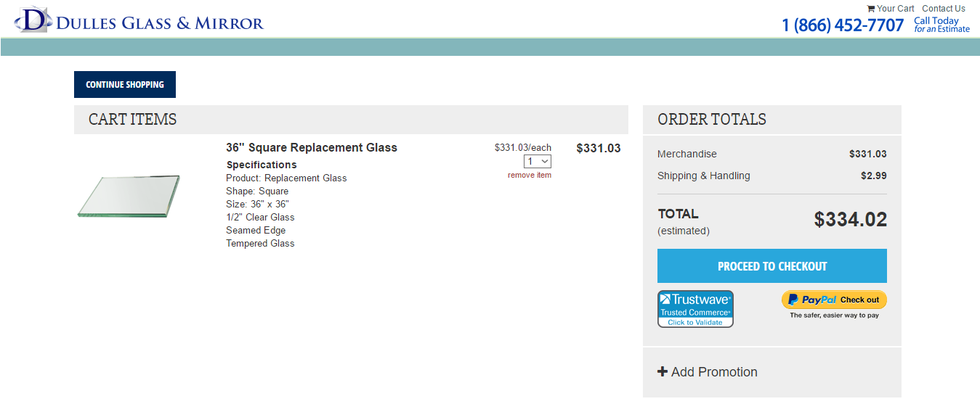What if we replaced all roadways and parking lots in the United States with solar panel roadways?
This query was introduced by an Idaho couple a few years ago in a crowdfunding effort on Indiegogo to develop prototypes. They received over $2 million from the venture. As well, the couple received a phase one development grant from the U.S. Department of Transportation. Although the idea has been coined as the “Road of Tomorrow” by many public officials like President Barack Obama, this is an extremely cost inefficient way of battling our infrastructure and energy issue.
The aim of this project, and what a solar panel roadway is, is not only to replace our road and walking surfaces with solar panels, but also to upgrade many of the features these passages provide. The developers plan to put LED lighting under the tempered glass to light up the pathways, as well are aiming to place heated pads inside the panels to melt snow and ice during winter.
Past the roadways themselves, the goal is to place electrical lines, transformers and high speed internet fiber optics that are currently above ground to be underground alongside the roadways to manage their functions.
All of these ideas sound wonderful, but if we look at the cost effectiveness of what we are doing now versus solar roadways, there is an exponential difference.
This examination could become complicated if I include everything, so to keep it as simple as possible, we are tossing out the cost of LED’s, heated pads, underground electric and fiber optic wiring, and even the solar panels. Let’s focus solely on the cost and effectiveness of the tempered glass, which is the most important part of this invention. It is the grip the cars will hold onto, and it is the only element standing between the pressure of the cars and the fragile solar panel. On top of those two purposes, it also has to allow sunlight to pass through itself to hit the solar panel.
Let’s say that each panel is about a square meter. Based on estimates from "Dulles Glass and Mirror, without etching the design of the grip on its surface, a square meter of ½ inch tempered glass is about $344. On the Solar Roadway website, they claim they have about 32,868 square miles of surface to work with. To make easier to calculate, let’s round the conversion from squared miles to square meters, which totals to about 8 billion square meters of surface to replace.
Due to the vast amount of land needed to be covered, the cost of the glass alone in this project is a little over $28 trillion. That is almost 7 times the 2016 U.S. national budget, and more than $8 trillion over our current national debt.
Now, let’s say the U.S. could afford the bill for this innovation. How plausible is glass as a gripping surface for cars? On the Solar Roadway website, it says the glass panels being used on roadways will be able to handle an emergency stop of a car going 80 mph at what they called the required distance, which there are no specifics for on their website. The website also says that these panels will last about 20 years.
Their biggest claim for the panels is the glass surface is harder to scratch than asphalt, and in turn will last longer than asphalt. Although this claim is true with no outside variables, they do not take into consideration how dirty roads become with dirt and oil.
First and foremost, how efficient do they think a solar panel covered in dirt and oil will be in collecting energy? Their claim of a minimum of 15 percent efficiency on these will surely be cut down further and further by the amount of muck on the glass surface.
Secondly, all that dirt in conjunction with the movement of traffic will be abrasive to the glass. Glass is relatively soft, being a six out of 10 on the "MOHS Hardness Scale." Dirt is essentially small rocks, which over time will act as sandpaper on top of the surface with the movement of two ton vehicles. This will make the glass smoother, which will make it slipperier, and more opaque, and in turn lower the efficiency of the solar panels further.
I don’t believe for one second these panels will last even 10 years at the same efficiency as when they were first installed. Replacing the glass is easy enough, but it is not cost effective in the least with each panel more than likely costing over the figure above of $334 for a square meter of tempered glass.
All the while, asphalt is extremely cost efficient, with the material being 100 percent recyclable. It is a very porous material, meaning it drains water efficiently, and provides grip and structure naturally with the actual griping element of roads being the rocks inside the asphalt. Asphalt is too soft by itself, and to suggest that glass is a better road material based on the hardness of it compared to asphalt without it being mixed in its usual rocky cocktail is outrageously irresponsible of the inventors.
Why people think changing something that works perfectly fine with something as costly and inefficient as Solar Roadways is beyond my mindset. I understand that the idea sounds like a solution to a lot of the issues conflicting the world nowadays, but stop day dreaming. If it sounds too good to be true, then it probably is.






















